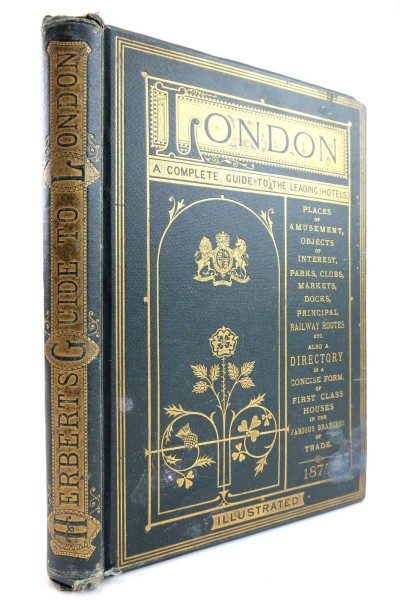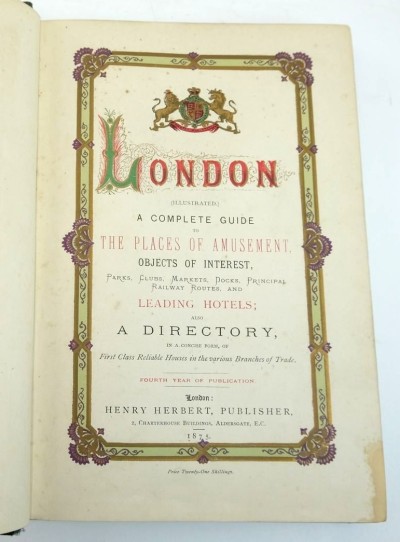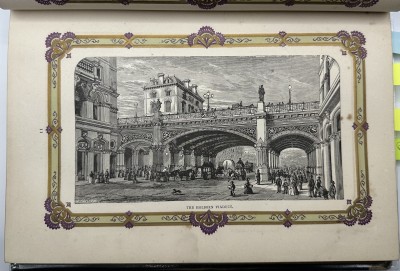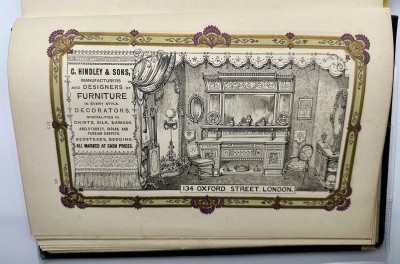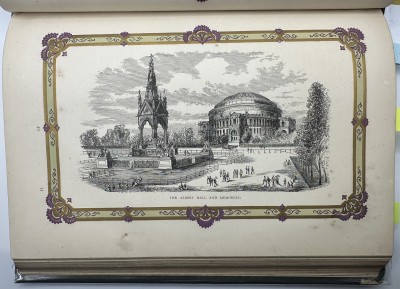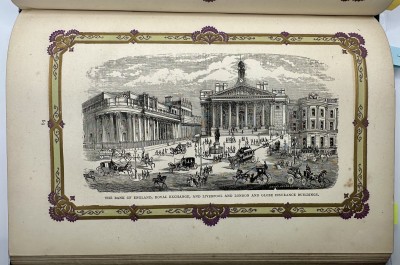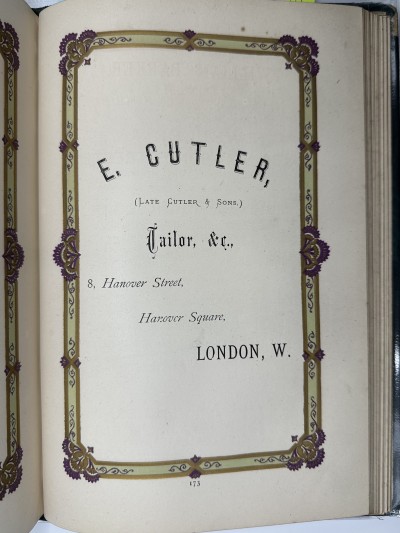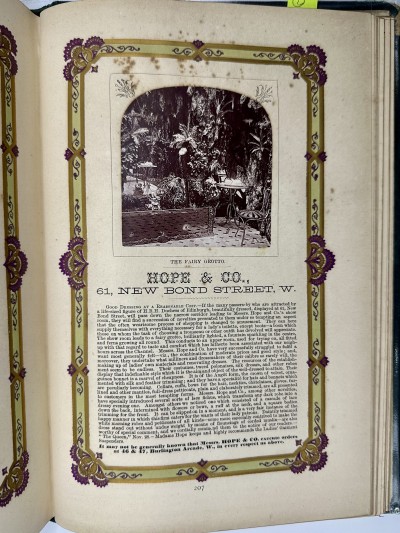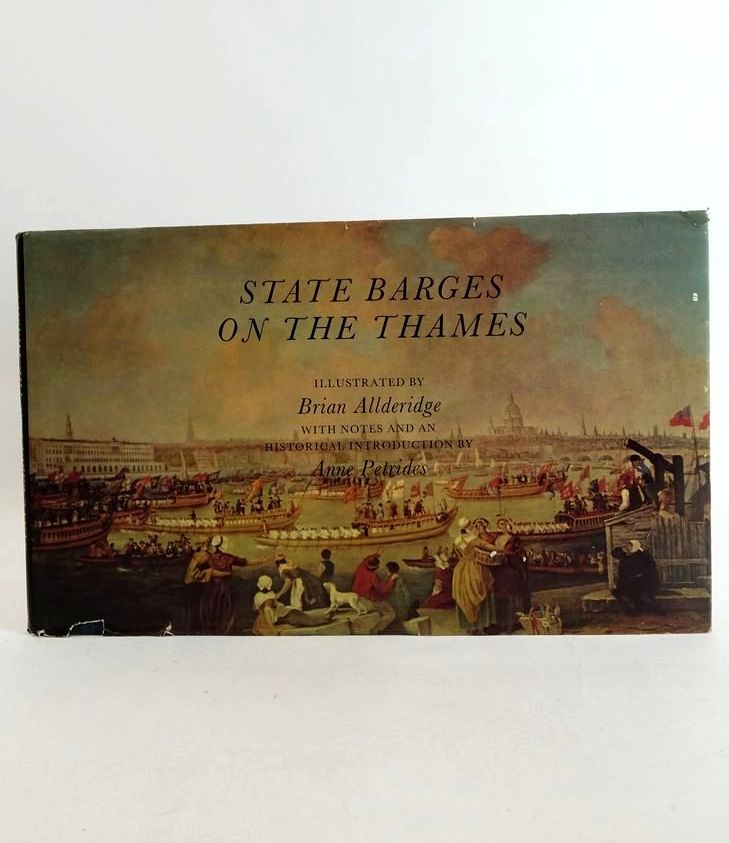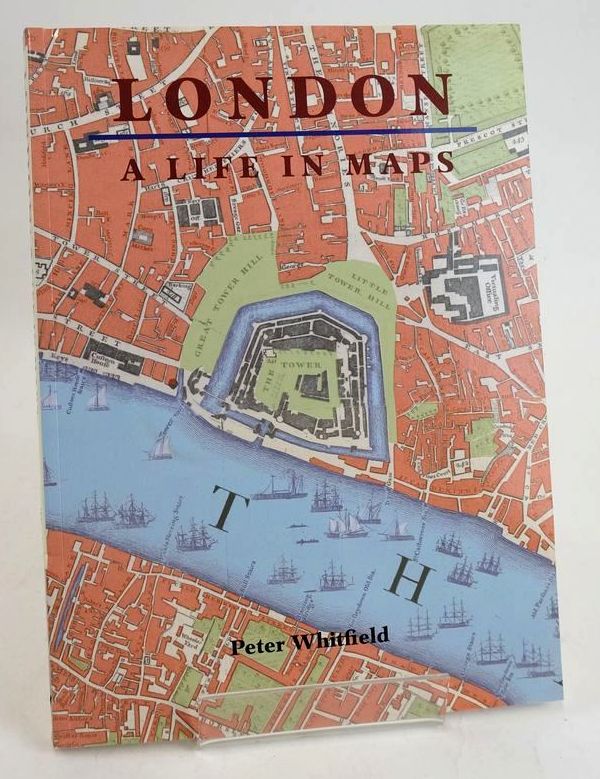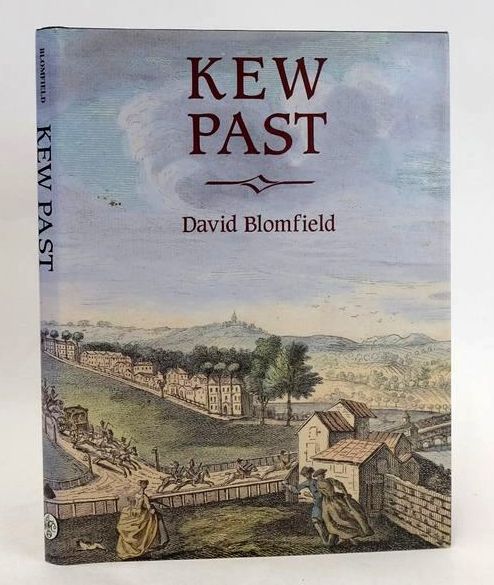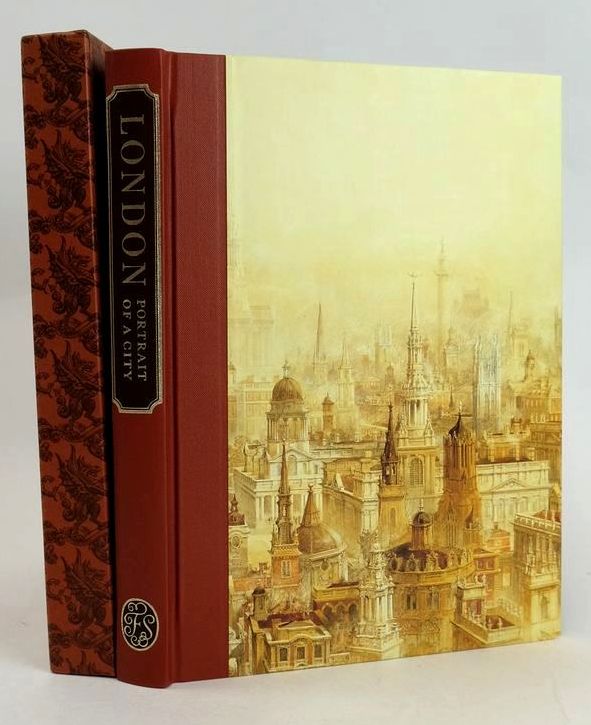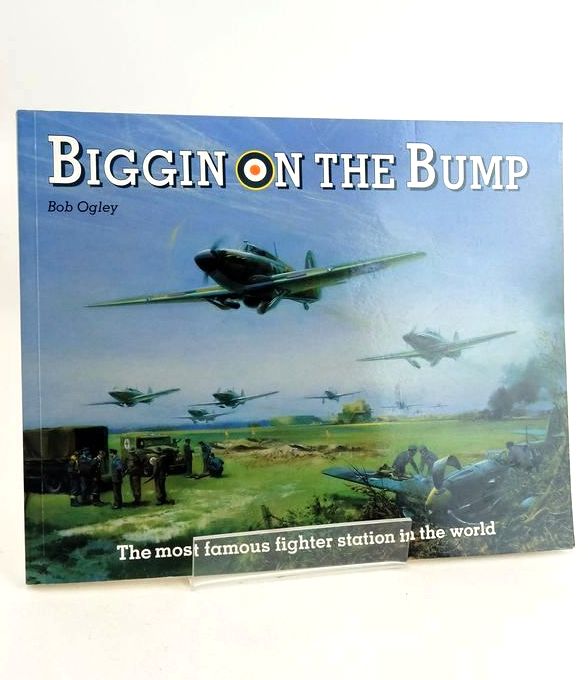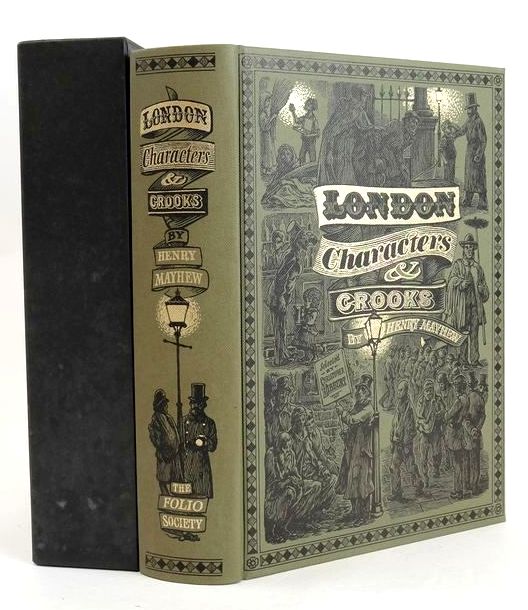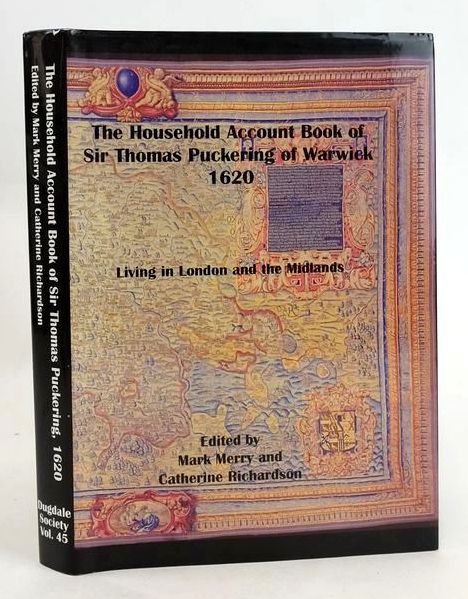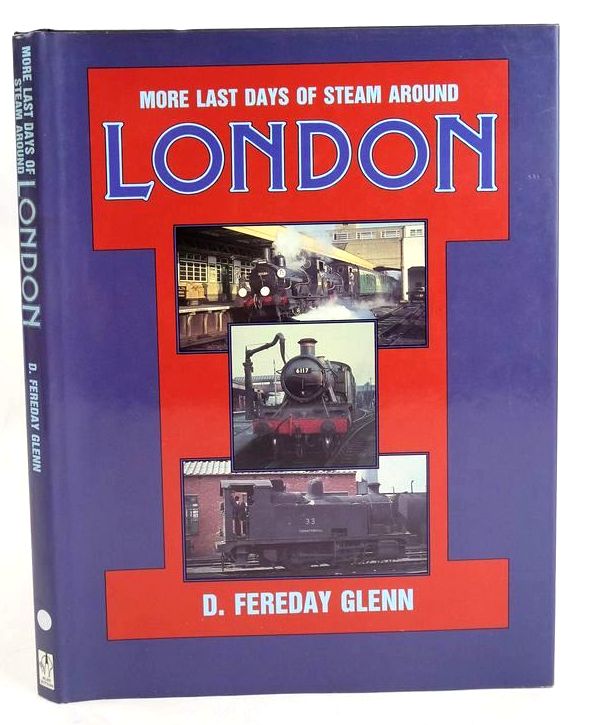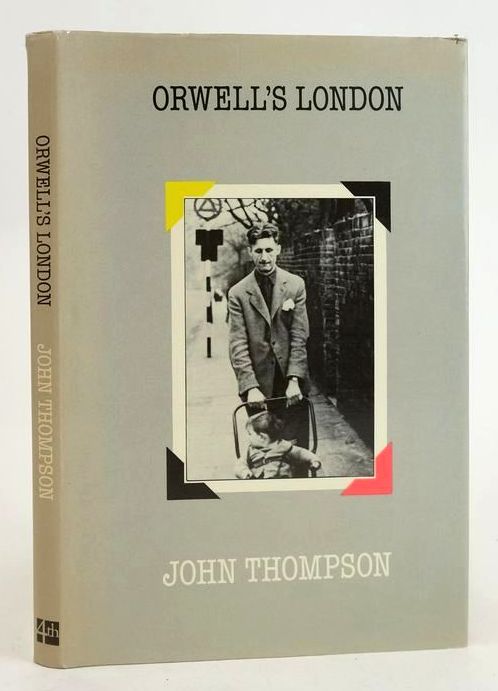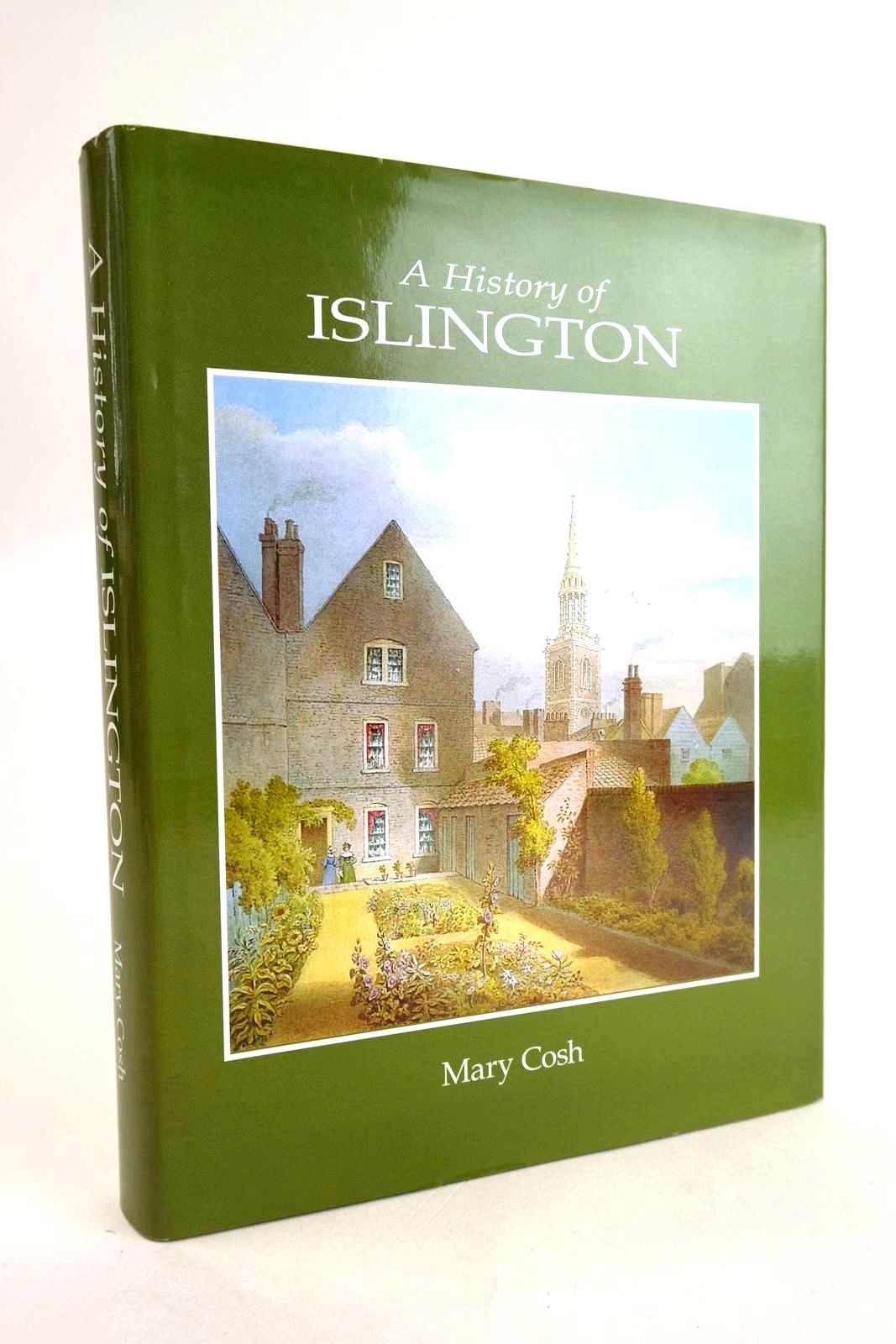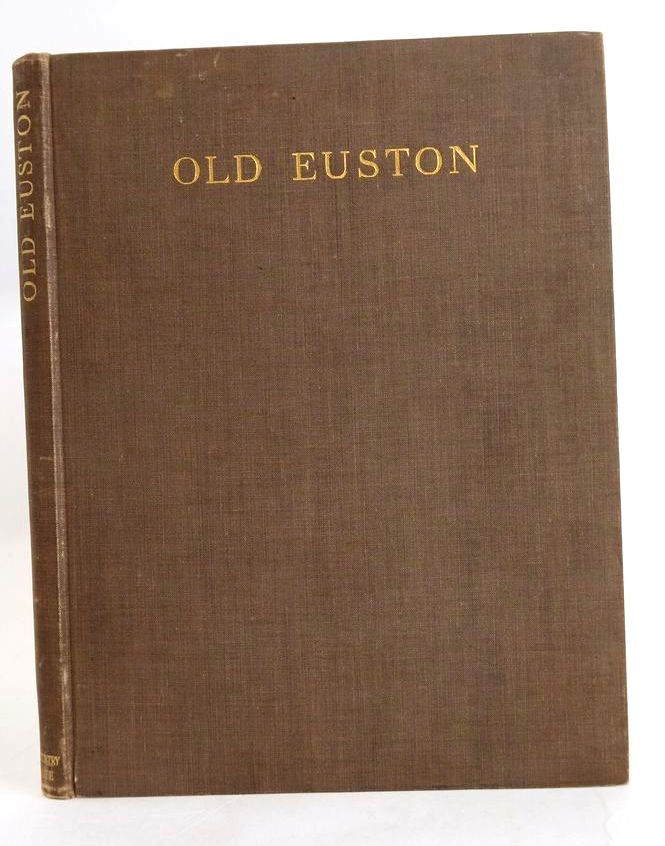London (Illustrated) - A Complete Guide…
Or… Herbert’s Guide To London, Being a Guide to Hotels, Places of Amusement, Objects of Interest, Parks, Clubs, Markets, Docks, Railway and Steamship Routes. In fact, anything you could wish to know about the London of almost 150 years ago appears to be in this Guide!
Books like this have always fascinated me. Despite the fact that I hated history lessons at school, I find that I’m drawn to books that describe what life was like in the past. This particular book is beautifully presented – unusually so for a directory, which are usually dull affairs. Not so this one, as every page is embellished with a beautiful gold and purple border and scattered throughout the book are full-page black and white engravings of various monuments and buildings to be seen in London.
I love the introduction to Readers: “It is not only a guide in the ordinary sense, but is a work of valuable reference for all visitors to London desirous of making purchases, as none but first-class houses in their various branches of trade are inserted, and the most perfect confidence may be enjoyed in any dealings with them.” So, no shady wheeler-dealers or riff-raff peddlers will be found within these pages then!
The first fourteen pages are taken up with the Contents pages, an Alphabetical Trade Directory with Index to Business Announcements (or advertisements to you and me), a street map and railway map and a Classified Trade Directory with the advertisements listed by trade.
Then follows 80 pages of a General Description of London – ‘general’ being an understatement as it is actually very detailed. The population of London in 1875 was 3,600,000. Today it is 9,748,000. It has grown somewhat in the last 150 years!
The section on street names is fascinating: “The streets are well lighted, but their unsystematic arrangement must puzzle as well as interest strangers, and their nomenclature will also amuse”. Represented are Loyalty (sic) and Nobility (King, Queen, Prince, Princess etc.); Heroism (Waterloo, Blenheim, Trafalgar and Wellington); Religious names (Paternoster Row, Amen Corner, Ave Maria Lane); Paganism and ancient mythology also claim attention (Neptunes, Minervas, Dianas); Zoological appellations (Elephant, Lamb, Cow, Duck, Fish); and the ones I like most – Pudding Corner, Old Pie Lane, Vinegar Yard, Bread Street, Beer Street, Pineapple Place are just a few of the quaint street names to be found in London.
Architecture is mentioned, although not altogether flattering – “The houses in London are commonly four stories in height; rarely less than three. They are not by any means elegant, but rather dingy in appearance, except in the West End and more modern suburbs, where the architectural outlines are superb”.
Hyde Park is given a mention in glowing terms: “To see England’s fashion and beauty in perfection, strangers should be in Hyde Park, any afternoon from four to seven, in the season, which is at its height during the months of May, June and July, and they will there witness such a dazzling variety of splendid equipage, and such a number of equestrian and foot passengers, as must excite admiration and wonder”. Wow!! A spectacle clearly not be missed!
I thought it interesting that the “Shoeblacks” were given a special mention at the end of the General Description: “The Shoeblacks are an institution not to be overlooked. Attached to a brigade, they are subjected to strict rules of discipline, which render them respectful and attentive. Their charge is one penny”. The London Shoe-Black Brigade, I found out, was formed in the 1850’s to offer a better wage for children who cleaned boots and shoes of passers-by for a living.
Included in the General Description is a seven-page list of “Interesting Events in the History of London”. Beginning with the founding of Westminster Abbey in 616 by King Sebert, (although this may be disputed as Sebert was the first East Saxon king to convert to Christianity and legend claims he founded a monastery on the site of the present Westminster Abbey) and ending in 1873 with the opening of the Thames Tunnel as a public thoroughfare, this comprehensive list is full of interesting facts that would make great questions in a trivia quiz!
The latter part of the book is taken up with the trade advertisements which in themselves make very interesting reading, from those whose owners feel they have no need to include anything except their prestigious names, to those who feel the need to write an essay expounding their virtues.
In summary, this book is an invaluable source of information for the historian as well as being an informative read for those who have an interest in life in the Victorian era.
Contributed by Chris
(Published on 15th Mar 2024)


